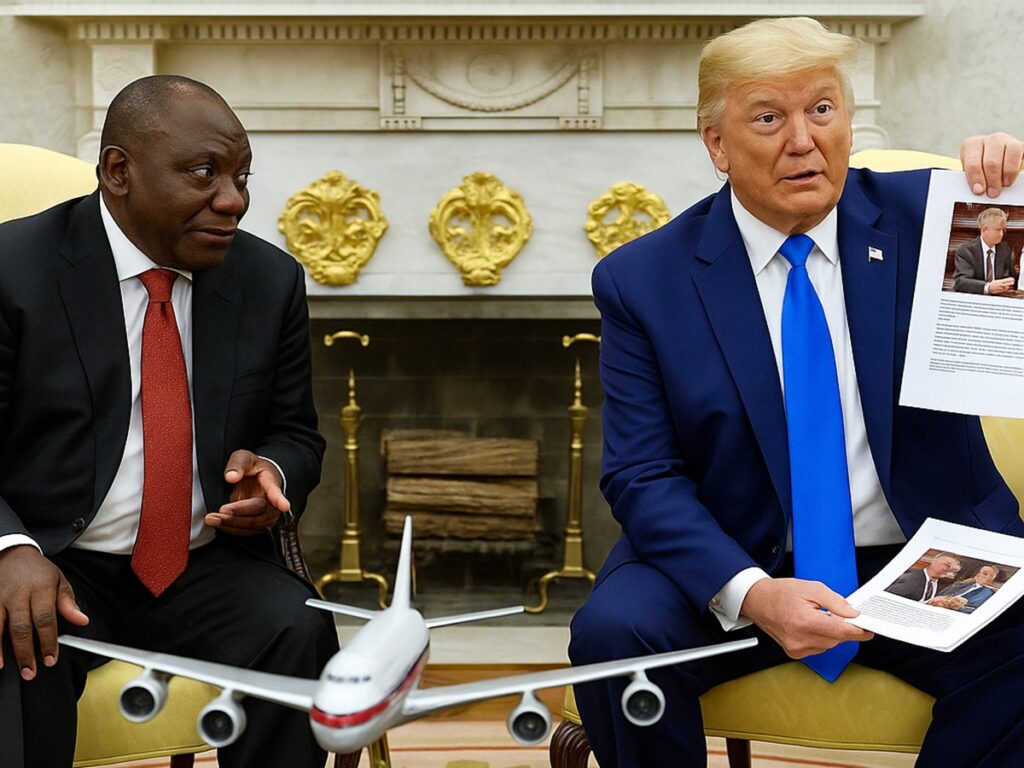New Delhi: U.S. President Donald Trump’s recent Oval Office confrontations with foreign leaders, including Ukraine’s Volodymyr Zelenskyy in February 2025 and South Africa’s Cyril Ramaphosa on May 21, 2025, signal a stark departure from the White House’s tradition of closed-door diplomacy. Once a bastion of confidentiality, where strategic discussions were shielded from public view, the White House under Trump has embraced a reality TV-style approach, with tense exchanges broadcast live, raising questions about the end of diplomatic secrecy and its implications for global relations.
A Break from Tradition
Historically, White House meetings followed a strict protocol: leaders delivered brief, scripted remarks for the cameras—typically 2 to 5 minutes of handshakes and platitudes—before the press was ushered out for private talks. This ensured sensitive discussions, whether on trade, security, or disputes, remained confidential, allowing room for candid dialogue without immediate public scrutiny. From Richard Nixon’s secretive China outreach in the 1970s to Bill Clinton’s discreet Middle East peace negotiations, confidentiality preserved diplomatic flexibility. Even when tensions arose, as during Nixon’s era when secret dealings led to public shock and calls for transparency, the core of strategic talks stayed off-camera, a practice mirrored globally from the Kremlin to Asian capitals.
Trump’s Public Ambushes
Trump has upended this norm, turning Oval Office meetings into public spectacles. His February 2025 clash with Zelenskyy saw Trump openly berate the Ukrainian leader, alleging Ukraine’s inability to counter Russia without U.S. aid, a moment that went viral and ended with Zelenskyy leaving early. More recently, on May 21, 2025, Trump accused Ramaphosa of overseeing a “white genocide” in South Africa, presenting debunked claims with a video montage—later revealed to feature footage from Congo, not South Africa. Ramaphosa’s press secretary later emphasized that “sensitive subjects should remain within mutual trust,” echoing sentiments from leaders like Germany’s Angela Merkel, who faced Trump’s on-camera handshake snub in 2017, and others from France to Canada, who have criticized his approach as undiplomatic.
Why the Shift to On-Camera Diplomacy?
Trump’s strategy appears tied to his political brand as a “no-nonsense” leader, a USP that resonates with his base. By publicly confronting Zelenskyy, Trump aligns himself with Russia, appealing to segments of his electorate skeptical of U.S. involvement in Ukraine. Similarly, his attack on Ramaphosa, falsely claiming a genocide of white farmers, caters to white nationalist sentiments, amplified by far-right figures like Elon Musk, who attended the meeting. Posts on X reflect this divide, with some users praising Trump’s “boldness” while others decry his racial divisiveness. Trump’s history of publicizing sensitive exchanges, like sharing North Korean leader Kim Jong-un’s “love letters” in 2019, further illustrates his penchant for transparency when it serves his narrative, contrasting sharply with predecessors like Clinton, Bush, or Biden, who prioritized confidentiality to maintain diplomatic relations.
Implications of Public Diplomacy
Off-camera talks historically allowed leaders to address tensions without risking public embarrassment or misinterpretation, preserving space for damage control. Trump’s approach risks the opposite: when discussions go public, as with Ramaphosa, they fuel global narratives—South Africa’s crime issues were framed as racial genocide, a claim Ramaphosa rebutted by noting violence affects all races, with 26,232 murders in 2024, only 44 in the farming sector, per South African Police Service data. Such public spats can erode trust, as seen with Zelenskyy’s disinvitation from a White House luncheon post-confrontation. Moreover, they diminish America’s diplomatic credibility, with allies like Canada and France objecting to Trump’s methods, fearing long-term relational damage.
Has Closed-Door Diplomacy Ended?
While Trump’s on-camera ambushes mark a significant shift, closed-door talks haven’t entirely ceased. Ramaphosa’s delegation stayed for nearly two hours of private discussions after the public confrontation, suggesting some adherence to traditional diplomacy. However, Trump’s selective transparency—targeting leaders like Zelenskyy and Ramaphosa for public critique while sparing others—indicates a strategic use of openness to bolster his image as a straight-talking leader. This trend may not end closed-door diplomacy but redefines it, prioritizing domestic political gains over international trust. As Trump continues to dominate headlines with such tactics, the White House’s once-secretive halls are increasingly a stage for viral, high-stakes drama.


